Joomla Help Screens
Manual Index
Users: Options
Description
The Users: Options page is used to set set global options for all users, including:
- Captcha,
- registration allowed and type of registration,
- default user group for new users,
- reset password or username counter,
- new user registration email notice to administration and more.
How to Access
- Select Site → Users from the Home Dashboard. Or...
- Select Users → Manage from the Administrator menu. Then...
- Select the Options toolbar button
Screenshot
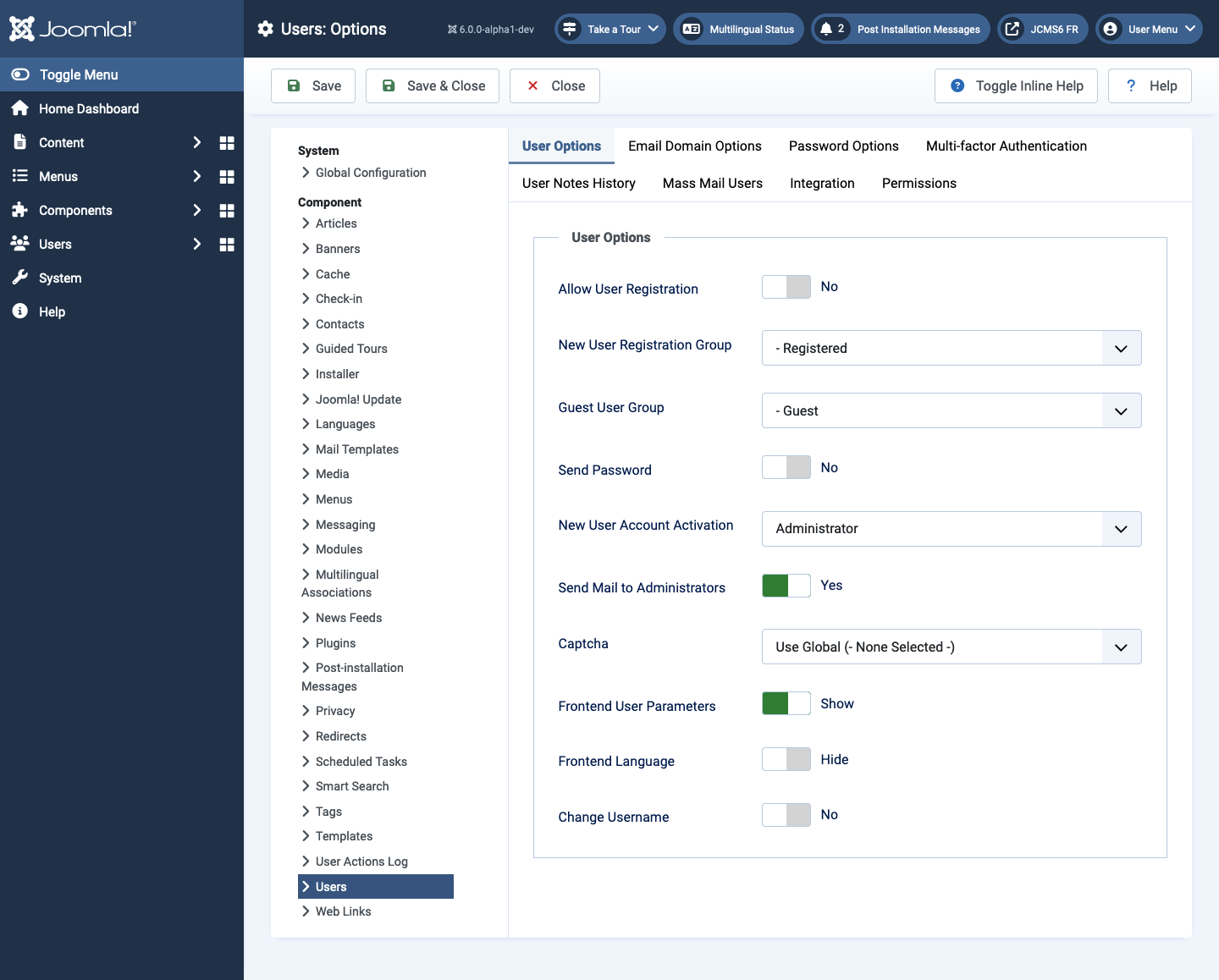
Form Fields
User Options tab
- Allow User Registration
- Yes Users can register from the Frontend of the site using the Create an Account link provided in the Login form.
- No The Create an Account link will not show.
- New User Registration Group The group that users are assigned to by default when they register on the site. Defaults to Registered.
- Guest User Group The group that guests are assigned to (Guests are visitors to the site who are not logged in). It is possible to create content on the site that is visible to guests but not visible to logged in users.
- Send Password If set to Yes the user's first password will be emailed to the user as part of the registration mail.
- New User Account Activation
- None User account will be active immediately with no action required.
- Self User will receive an email with an activation link. The account will be activated when the user selects the activation link.
- Administrator User will receive an email with an activation link. When the user selects this link, the Site Administrator will be notified via email and asked to activate the user's account.
- Send Mail to Administrators Send email notification to administrators with New User Account Activation set to None or Self.
- Captcha The Captcha plugin for User Account Registration, User Password reminder and Username reminder.
- Frontend User Parameters
- Show Users will be able to modify Basic Settings from the site Frontend.
- Hide User will not be able to change these settings.
- Frontend Language Show or Hide the site language. ...
- Change Username Allow user to change Username.
Email Domain Options tab
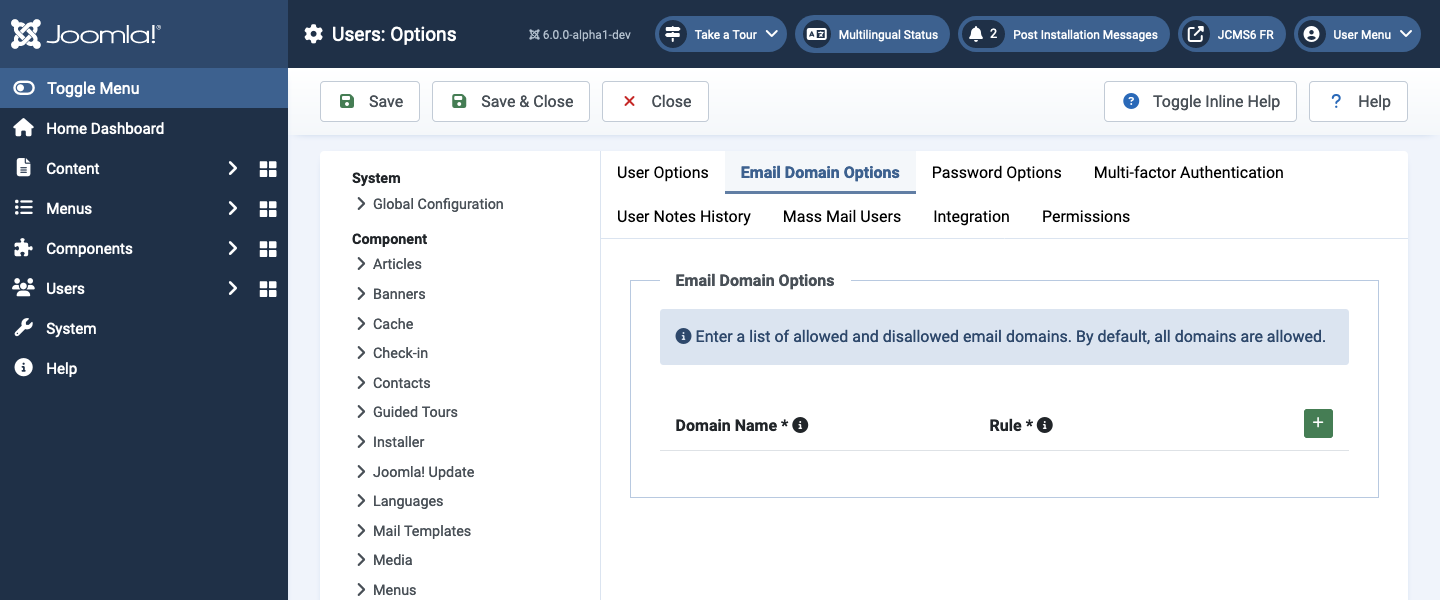
- Domain Name Enter a list of allowed and disallowed email domains.
By default, all domains are allowed. Wildcards (*) are supported. For
example:
- * (Asterisk): Allows or disallows all domains
- *.com: Allows or disallows all '.com' domains
- *.joomla.org: Allows or disallows all 'joomla.org' subdomains.
- Rule Select whether to allow or disallow the domain.
Password Options tab
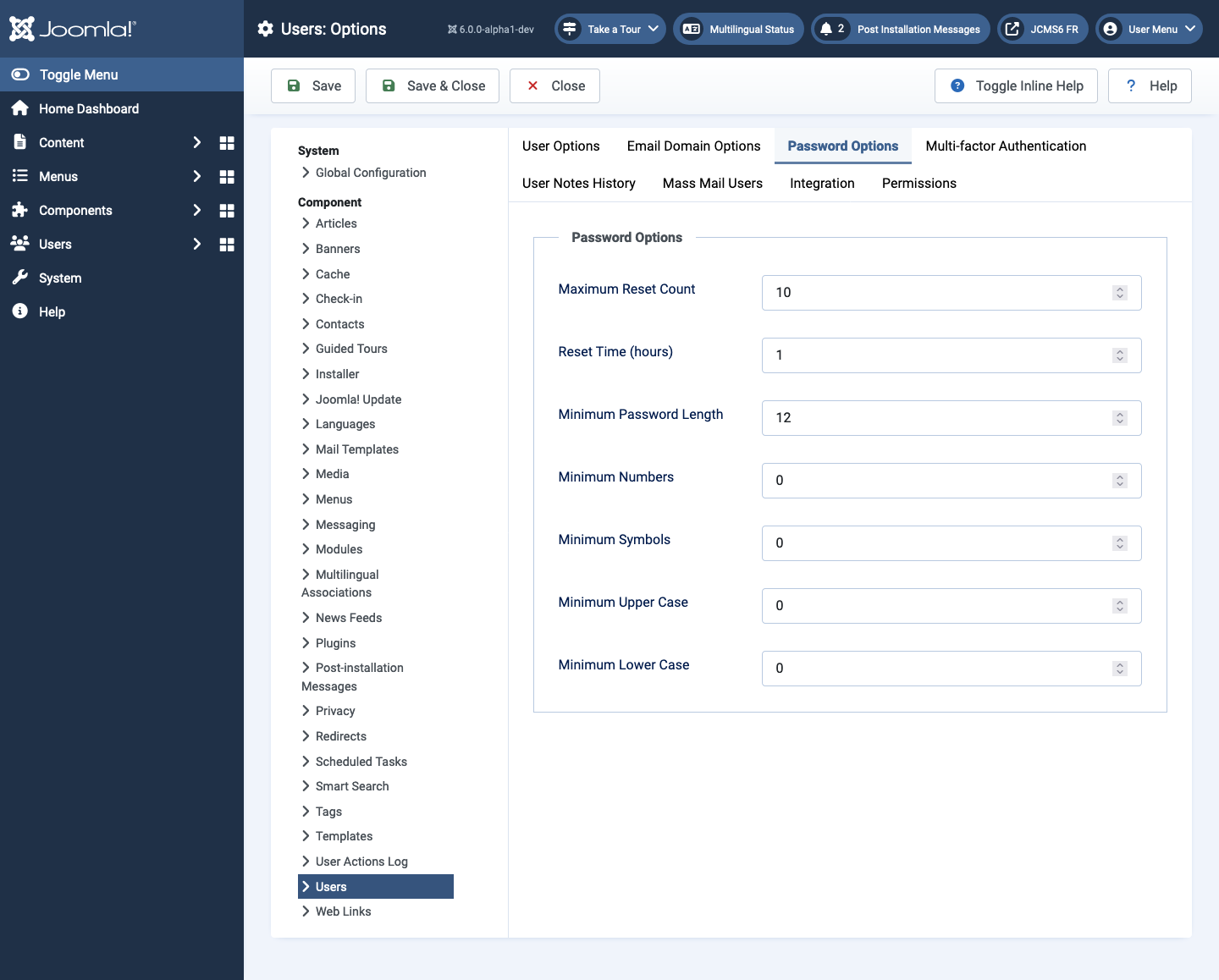
- Maximum Reset Count The maximum number of password resets allowed within the time period. Zero indicates no limit.
- Reset Time The time period, in hours, for the reset counter.
- Minimum Length Set the minimum lenth for a password.
- Minimum Integers Set the minimum number of integers that must be included in a password.
- Minimum Symbols Set the minimum number of symbols (such as !@#$) required in a password.
- Minimum Upper Case Set the minimum number of upper case alphabetical characters required for a password.
- Minimum Lower Case Set the minimum number of lower case alphabetical characters required for a password.
Multi-factor Authentication tab
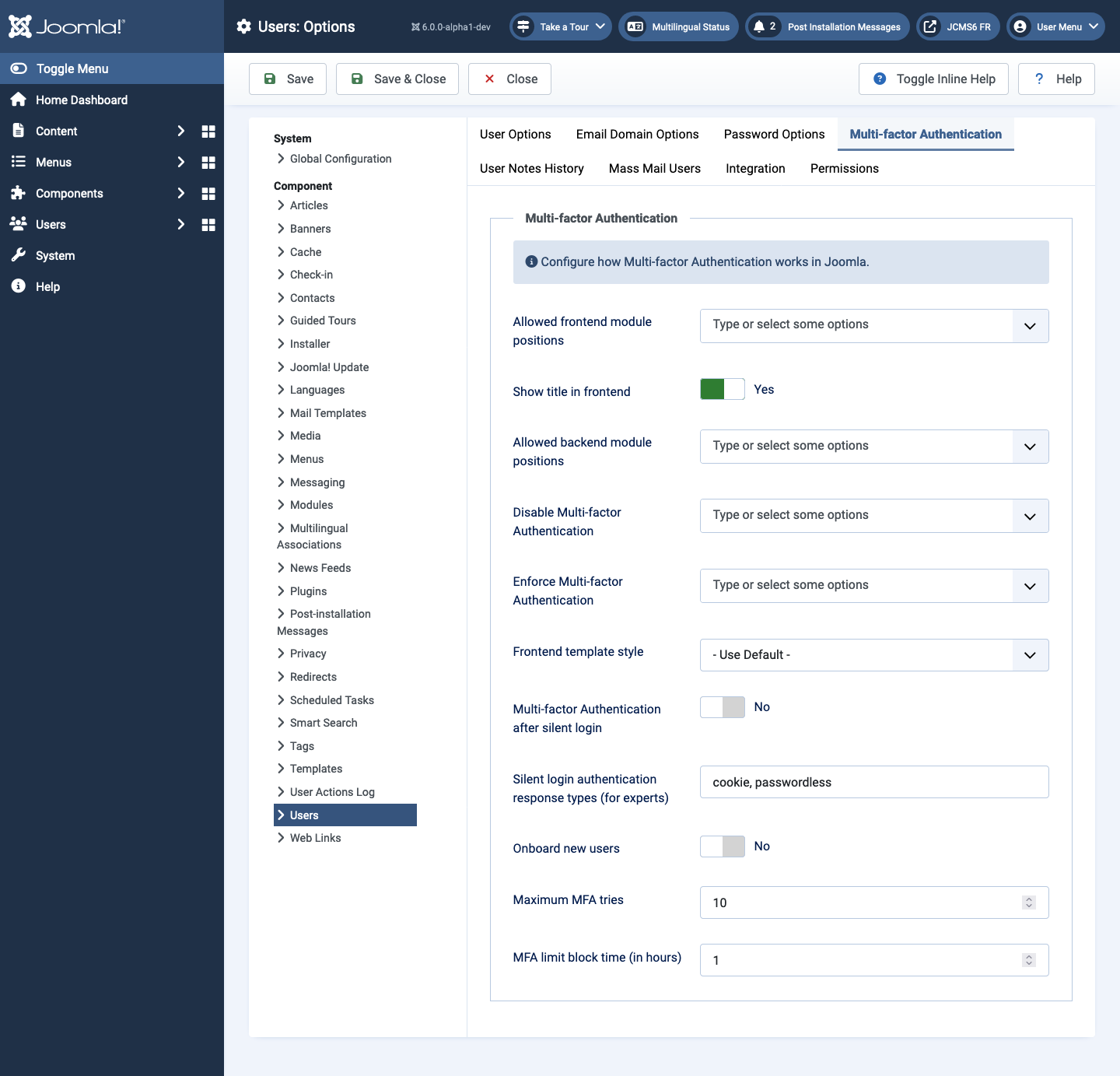
- Allowed frontend module positions When displaying the frontend Multi-factor Authentication page all modules will be hidden except those in the positions selected here.
- Show title in frontend Display a title in the frontend
Multi-factor Authentication verification page? Please note that the
title is always displayed in the backend. If you need to change the
title please override the language key
COM_USERS_HEADING_MFAusing Languages: Overrides. - Allowed backend module positions When displaying the backend
Multi-factor Authentication page all modules will be hidden except
those in the positions selected here. Please note that modules in the
titleposition are always shown: this is required to show the backend page icon and title. - Disable Multi-factor Authentication Any user who belongs in any of the selected user groups will be exempt from Multi-factor Authentication. Even if they have set up Multi-factor Authentication methods they will not be asked to use them when they are logging in, nor will they be able to view them, remove them, or change their configuration.
- Enforce Multi-factor Authentication Any user who belongs in any of the selected user groups will be required to enable Multi-factor Authentication before being able to use the site.
- Frontend template style Choose the frontend template style to use in the Multi-factor Authentication page. Select Use Default to use the default site template style.
- Multi-factor Authentication after silent login Should the user have to go through Multi-factor Authentication after a silent user login? Silent logins are those which do not require a username and password for example the Remember Me feature, WebAuthn etc.
- Silent login authentication response types (for experts) For
experts. A comma separated list of Joomla authentication response
types which are considered silent logins. The default is
cookie(the Remember Me feature) andpasswordless(WebAuthn). - Onboard new users If the user has not yet set up Multi-factor Authentication and this option is enabled they will be redirected to the Multi-factor Authentication setup page or the custom URL you set up below. This is meant to be a simple way to to let your users know that Multi-factor Authentication is an option on your site.
- Custom redirection URL If it's not empty, redirects to this URL instead of the Multi-factor Authentication setup page when the option above is enabled. Warning: This must be a URL inside your site. You cannot log in to an external link or to a different subdomain.
User Notes History tab
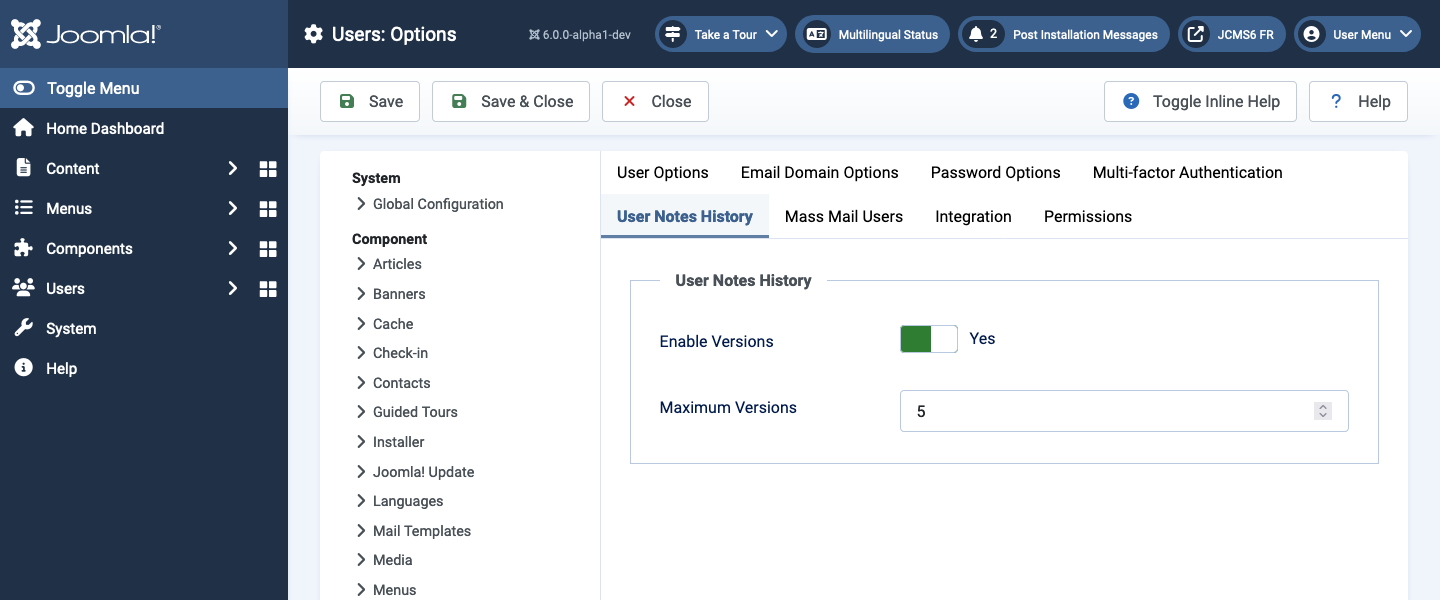
- Enable Versions Save version history for User Notes.
- Maximum Versions The maximum number of versions to store for a User Note. If a User Note is saved and the maximum number of versions has been reached, the oldest version will be deleted automatically. If set to 0, then versions will never be deleted automatically.
Mass Mail Users tab
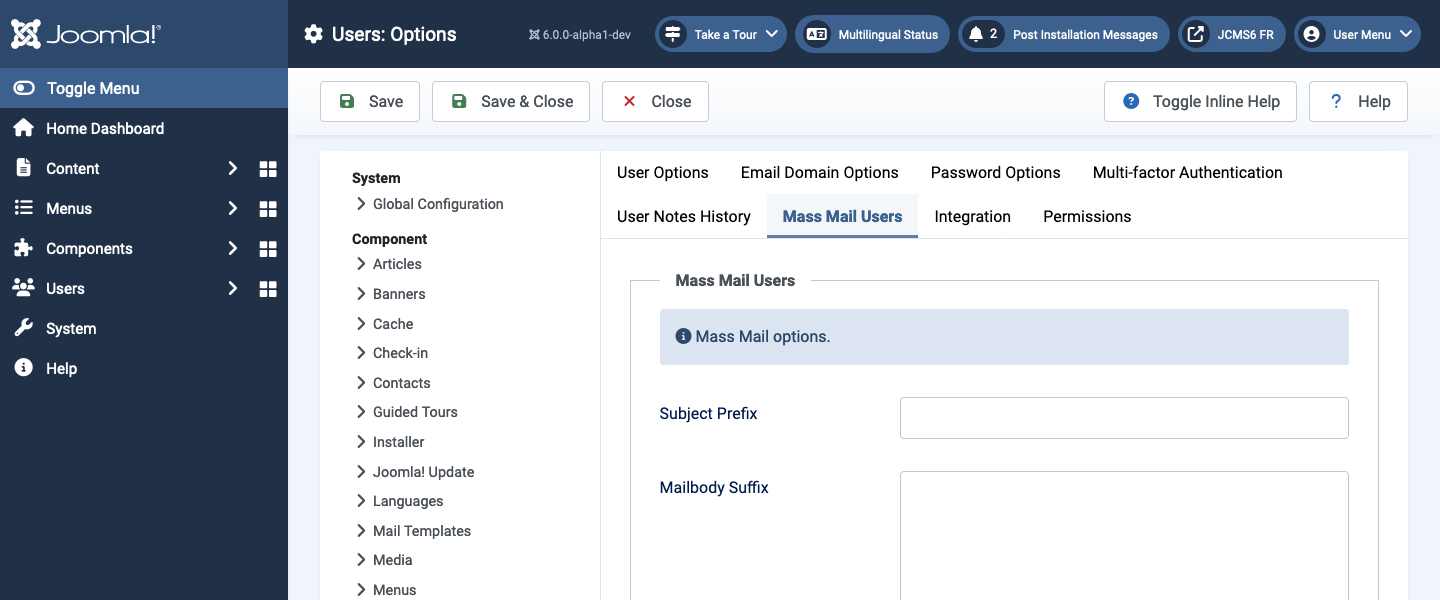
- Subject Prefix Enter optional text to be inserted automatically before the subject of the mass email.
- Mailbody Suffix Enter optional text to be inserted automatically after the body of the email (for example, a signature).
Integration tab
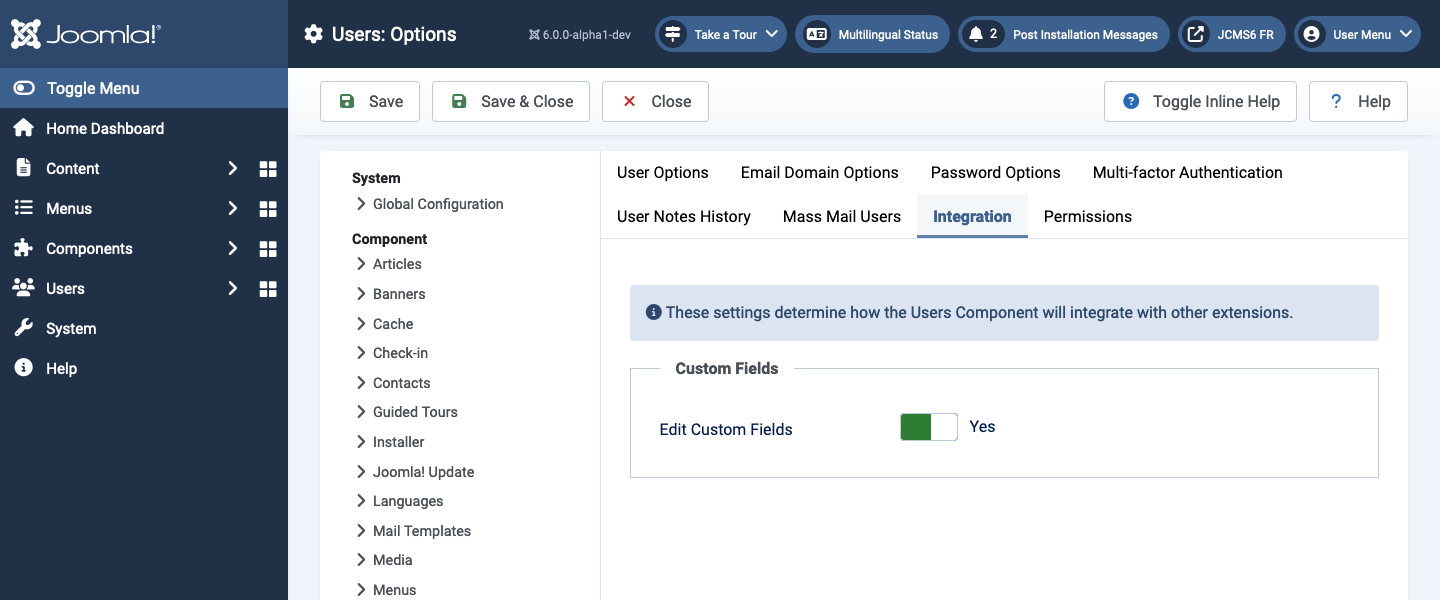
- Enable Custom Fields Enable the creation of custom fields.
Tips
If you are a novice user, keep the default values here until you learn more about using global options.